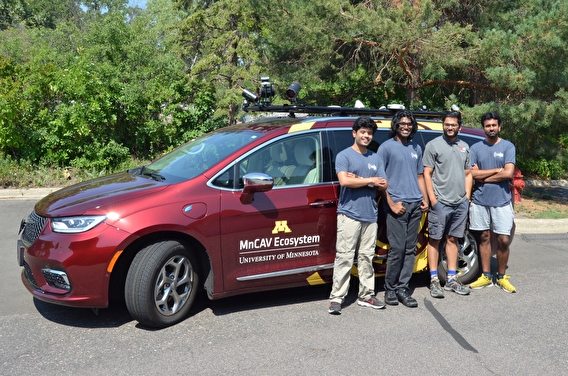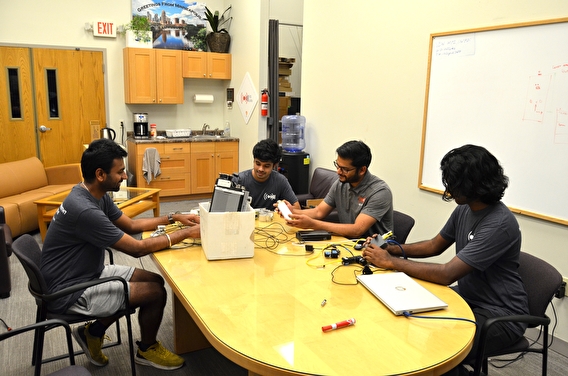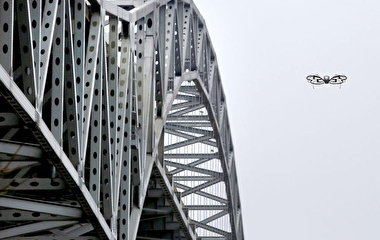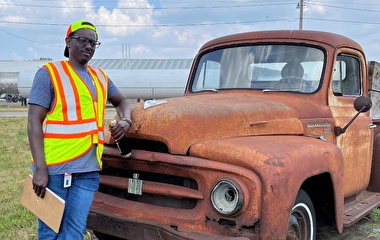
Midway through master’s programs at the University of Minnesota, four graduate students—Sahith Reddy Chada, Sai Tarun Inaganti, Naga Hema Chand Chinta, and Mrinal Managoli—were connected to a summer 2023 internship opportunity with VSI Labs through their computer science and engineering professor and CTS Research Scholar Nikolaos Papanikolopoulos.
VSI Labs provides technical and applied research on the hardware, software, and connectivity systems that support advanced driver-assistance systems (ADAS) in connected and automated vehicles (CAVs). During their internships, the students contributed to all aspects of VSI’s scope. They tested hardware components such as cameras and sensors for performance, configured software to collect and process systems’ complex data accurately, and validated and analyzed data retrieved from CAV systems. They also participated in weekly roundtables with VSI leaders and employees discussing industry trends and the latest research.
“We’ll need to have practical experience in addition to theoretical,” Chand Chinta said. “This has been an end-to-end experience, from fetching data to analytics and testing hardware.”
On a visit with CAV Career Pathways summer campers to the MnROAD facility near Albertville, the team of VSI interns applied their skills to help configure the U of M’s MnCAV Ecosystem van to test operation solely via GPS location. The van is outfitted with a number of systems in addition to GPS—lidar, radar, and multiple cameras—that the team also tested. Recent research has pointed to the importance of testing CAV systems in all climates and conditions to overcome challenges posed by poor weather, inconsistent lane markings, and even swaths of heavy shadows.
“In a climate like Minnesota where you can’t rely on cameras in snow, GPS is essential,” Inaganti said. “To run the pre-programmed route smoothly on the curved track, we had to modify the controller code for lateral control, and additional calibration was needed for the data update.”

The team substantiated that the precise physical position of the GPS unit on the van is critical for predictable operation because the drive path of a CAV vehicle can be accurate within 1 to 2 centimeters of the preset GPS route. If the GPS unit is not optimally placed on a vehicle to meet this exacting variance, ride quality can suffer. And this effect can compound on curves and produce sway, which may be uncomfortable or unnerving for passengers who are in the early stages of gaining confidence and trust in ADAS “self-driving” systems.
“Getting experience with practical use cases is very valuable,” Managoli said. “You learn the importance of small things that you can't learn in the classroom but can only learn through the practical work.”
Following the internship, and looking ahead another two years to completion of their master’s programs, each of the students sees promising opportunities to contribute their skills and knowledge to the rapidly growing field, either with positions in industry or academia—or both.
“At this point, I’m interested in a role in industry, and perhaps the experience at VSI made that more clear,” Chada reflected. “There are lots of opportunities to contribute to the field through white papers, development, and applied research.”
The team’s impact on VSI has been as valuable as the experience the interns received.
“This is the first time we’ve had this number and caliber of master’s students,” said VSI AV solutions engineer Patrick Marquardt. “These interns let us more than double our project load and have brought a lot of skills—and hands—to our work.”
—John Siqveland, CTS communications director


